2013 Tesla Model S Review – Video

Ask any owner about their Model S and they’ll probably have a hard time coming up with reasons to complain about it. Even people who bought early models known to come with quality defects don’t seem to mind. How is that possible?
FAST FACTS
| 1. Pricing starts at $71,070 but quickly climbs over $100,000 with options you’ll probably want. |
| 2. Output ranges from 302 hp and 317 lb-ft of torque on the base car to 416 hp and 443 lb-ft on the “P85” model. |
| 3. The Model S is rated to drive up to 265 miles with the 85 kWh battery. |
| 4. The Model S scored top marks in the National Highway Traffic Safety Administration’s crash tests. |
Tesla co-founder and CEO Elon Musk has achieved something trickier than convincing YouTube viewers to forego flinging angry comments at everyone. He’s managed to successfully market a very expensive electric car better than corporate giants like Nissan ever could.
In some ways, his process was simple. Musk made electric cars fun.
The Model S is available in a wide range of configurations including the choice between two battery packs; one with 60 kilowatt hours and the other with 85. Both are considerably bigger than other electric cars. For example, Nissan uses a 24 kWh pack in the Leaf. But the bulky energy storage system is built into something Tesla refers to as a “skateboard” chassis.
Stop by one of the company’s stores, and you’ll see a bare version of the platform on display. Its name presents a clear description. There are four wheels, suspension components and a long, wide, flat metal housing to join them. The battery pack hides inside the structure.
Get the Flash Player to see this player.
It also houses all of the drivetrain components, of which there are relatively few. An electric motor powers the back wheels. The result is a remarkably smooth and stable ride with absolutely thrilling acceleration.
POWERFUL AND FAST
The car ranges from 302 hp and 317 lb-ft of torque for the 60 kWh battery to 362 hp and 440 lb-ft with the 85 kWh.
That climbs even farther to 416 hp and 443 lb-ft if you buy the P85, which comes with a high-performance drive inverter. Sprinting from 0-60 mph takes 5.9, 5.4, or just 4.2 seconds depending on which one you choose.
Pricing starts at $71,070, but at that number you’re missing out on much of the content that makes the Model S a great product. The car Tesla provided for testing came with most of the options except a “Performance Plus” package, which costs $6,500.
Even without that, the tester was $117,020 after factoring in a $7,500 federal tax credit. Options like the “subzero weather package” ($750) that add heated rear seats, wiper blade defrosters and washer nozzle heaters aren’t necessary everywhere. Point is, the base price doesn’t mean much.
Instant torque sent to the rear wheels makes this thing a treat to drive. It rockets from stops and corners are equally exhilarating.
Regenerative brakes return energy to the battery pack like any other electric car, except they seem more pronounced in this case. In fact, the left pedal is only required for emergency braking or coming to a complete stop. That part takes some acclimation.
Otherwise, the Model S is refreshingly simple, smooth and quiet to drive.
EXTERIOR STYLE, AND LOTS OF IT
The difference between the base car and a generously-equipped version might as well amount to an entirely different product.
At the entry level, you’ll get 19-inch alloy wheels. Of course style is subjective, but the base rims wrapped in high profile tires look more out of place than Quasimodo at a cocktail party.
The 21-inch “turbine” units look much, much better. But the brand isn’t beyond compromise; it plans to offer smaller versions in the same style soon that won’t cost as much.
It isn’t until you try to park that the imposing size dawns on you. It’s wide. Very wide. At 77.3 inches excluding the mirrors, its 2.5 inches more laterally endowed than Mercedes’ flagship S-Class. Such breadth is virtuous for fast corners, but you’d better pick your parking spaces carefully.
Maybe it’s a testament to how big cars are in general, but the Model S should look like a land barge. It doesn’t. The obsessively aerodynamic shape hides bulk like black clothing on a pudgy standup comic.
CABIN CONTAINS TONS OF TECH
By now you’ve probably already heard about the car’s best interior feature. If not, here goes. It’s a gargantuan touch screen that controls almost everything in the car.
The panoramic glass roof (should you choose that option), climate control, phone operation and Internet radio; it’s all accessible through something that feels more like a large tablet computer than an “infotainment system.”
It’s responsive, too. There is almost no detectable lag between screens, and the image quality is stunning. Admittedly, using a computer system for some things can be a little disconcerting at first, but you’ll soon grow to love everything about it. In fact, the biggest downside lies in having to use systems in other cars. They feel finicky and slow by comparison.
When you’ve finished playing with the car’s main attraction, there’s an entire cabin to take in. But there really isn’t much about it to discuss. There’s a bin between the front seats big enough to hold a brief case or hand bag, a place to rest your right elbow while driving, and a steering wheel. The usual audio and cruise control buttons are present, but for such a high tech car, there isn’t very much going on. It’s refreshing.
The digital gauge cluster is of equally high resolution and responds as promptly as the touch panel. Speed, remaining range and other information relevant to the driver is on display.
For a car with measurements that place it between a mid- and full-size sedan in terms of overall length, rear seat legroom is a little sparse. Your knees probably won’t be knocking up against the seatbacks, but 35.4 inches is actually a little less than an E-Class offers.
Don’t be disappointed. There’s a very good reason Tesla chose not to give its rear seats as much space as a prom limo: the trunk is huge. With the seats up, there are 26.3 junk-hungry cubic feet at your disposal. Lay them down, and the car has 58.1.
That also assumes you didn’t buy the two rear-facing seats. They allow you to carry the normal four passengers and two small children. This is probably a good time to mention that the Model S also achieved the highest crash test score possible from the National Traffic Highway Safety Administration.
WHAT DOESN’T IT HAVE?
It’s probably also worth noting that even though the Model S is priced beside cars engorged with safety technology, it’s missing current industry standards like blind spot monitoring and adaptive cruise control…
Then again, there’s a good chance you’ve been around a hell of a lot longer than any of those systems if you can afford Tesla’s asking price. Useful as they may be, you’ll (hopefully) be fine without them.
Don’t forget that Tesla is still a tiny company fighting to make its business viable in the long term. For the most part, they’ve built a product that avoids quality issues, but there are still a few small gaps you should know about before buying their car.
The big glass roof creates a comfortably open cabin feeling, but at highway speeds you’ll notice the panel flexing and buffeting while open. Disappointingly, a cubby below that vaunted screen feels particularly flimsy.
CHARGING AND RANGE
Tesla says the car can recoup enough to power to drive 57 miles (92 kilometers) in an hour of charging, but only when the car is outfitted with upgraded onboard charging gear and connected to a 240-volt outlet. But that figure is frustratingly ambiguous. With the normal onboard charger and a 240-volt outlet, the 85 kWh battery will take about 12 hours to fully recharge.
Just remember, “57 miles” doesn’t mean you can expect to drive that far. Every feature drains the battery and eats away at real-world range. Although the EPA ratings suggest a 265-mile range, factors like cold weather and driver habits will cut down on that distance.
THE VERDICT
It probably wouldn’t matter if the Model S could drive 500 or even 1,000 miles on a single charge. Some people would still grouse over its limitations as an electric car. Limitations in charging infrastructure restrict what it can do. This is true. It’s also true that you’re unlikely to run into those limitations outside of unusually long drives.
Don’t let electric naysayers scare you away from the Model S. If you can afford a six-figure car, Tesla can offer you something unusual, entertaining and incredible.
LOVE IT
- Rocket-like acceleration
- Massive high-resolution screen
- Attractive exterior style
LEAVE IT
- Questionable material quality
- Segment-standard safety features missing
- Charging requires planning

Luke is an energetic automotive journalist who spends his time covering industry news and crawling the internet for the latest breaking story. When he isn't in the office, Luke can be found obsessively browsing used car listings, drinking scotch at his favorite bar and dreaming of what to drive next, though the list grows a lot faster than his bank account. He's always on <A title="@lukevandezande on Twitter" href="http://twitter.com/lukevandezande">Twitter</A> looking for a good car conversation. Find Luke on <A title="@lukevandezande on Twitter" href="http://twitter.com/lukevandezande">Twitter</A> and <A title="Luke on Google+" href="http://plus.google.com/112531385961538774338?rel=author">Google+</A>.
More by Luke Vandezande














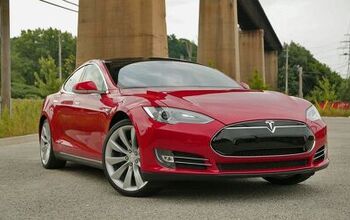
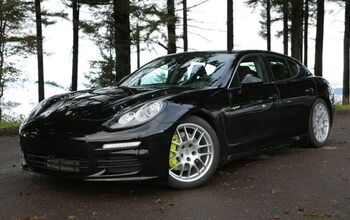
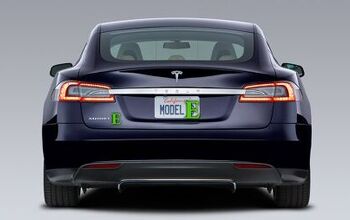
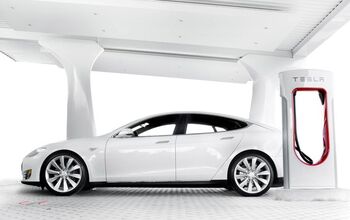
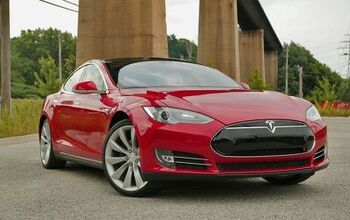

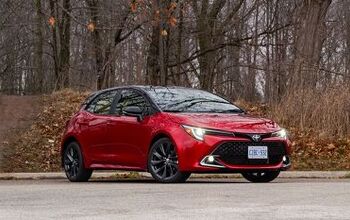

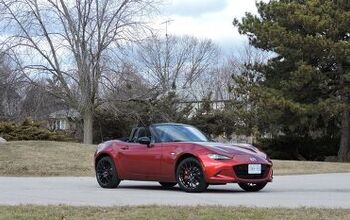

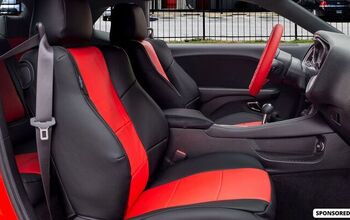
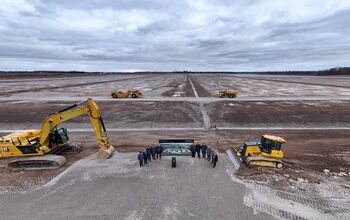
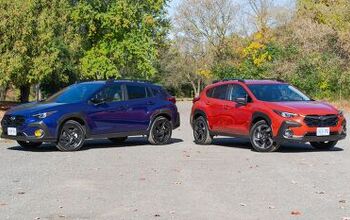




Comments
Join the conversation
What are you saying with "AND YOU ARE A BULLSHIT BECAUSE I? AM BIASED WITH TESLA!!!!! "?
109,000 miles and friends think it is nearly new. Fast plus.